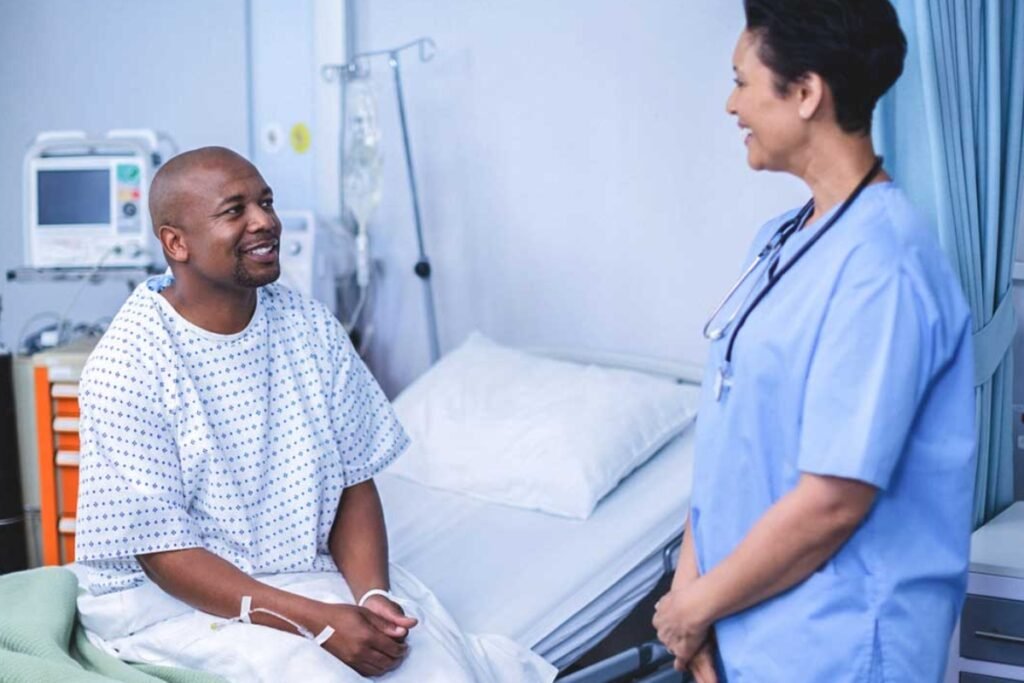Source – Seagen
Frontline treatment with the combination of brentuximab vedotin (Adcetris), nivolumab (Opdivo), doxorubicin, and dacarbazine led to an overall response rate (ORR) of 98% and a complete response (CR) rate of 93% in patients with early-stage, classical Hodgkin lymphoma, according to updated findings from part C of the Phase II SGN35-027 trial (NCT03646123).
At the time of the data cutoff, information on progression-free survival (PFS) was not yet available. 150 of the 154 individuals in the research were deemed evaluable for this measure of effectiveness.
“With teens and young adults primarily impacted by Hodgkin lymphoma, our goal is to develop curative treatments that improve survival while also reducing toxicity. The targeted agents of brentuximab Vedotin and nivolumab have distinct mechanisms of action and demonstrated promising activity and safety in this early study; the omission of bleomycin and vinblastine chemotherapy likely contributed to the absence of certain adverse events.”
– Jeremy Abramson, MD, director of the Jon and Jo Ann Hagler Center for Lymphoma at Massachusetts General Hospital and principal investigator of the trial
Patients with histologically confirmed, treatment-naive classic Hodgkin lymphoma and Ann Arbour Stage III or IV disease (part A), Ann Arbour Stage I or II disease with bulky mediastinal disease, or Stage III or IV disease (part B), or Ann Arbour Stage I or II disease without bulky disease (part C) were included in the open-label, non-randomized Phase II trial. Patients outside of the United States had to be at least 18 years old to participate. Additionally, patients had to have an ECOG performance status of 0 to 2 and a bidimensional quantifiable illness as determined by PET/CT or CT imaging.
Important exclusion criteria included nodular lymphocyte-predominant Hodgkin lymphoma, a history of another cancer within 3 years of study treatment, or any indication of recurrent cancer; prior immunosuppressive chemotherapy, therapeutic radiation, or any immunotherapy within 4 weeks of the first study treatment; or prior treatment with an anti-PD-1, anti-PD-L1, anti-PD-L2, or anti-CTLA-4 antibody.
IV brentuximab Vedotin, 240 mg of IV nivolumab, 25 mg/m2 of IV doxorubicin, and 375 mg/m2 of IV dacarbazine were given to patients in sections B and C. In parts B and C of the treatment, there were 6 cycles each.
In sections B and C, the key endpoint was the CR rate, while in part A, the primary endpoint was the rate of febrile neutropenia. Safety, lab abnormalities, duration of response (DOR), duration of CR (DOCR), event-free survival, PFS, and overall survival were secondary end goals for sections B and C.
When it comes to safety in part C, the most frequent any-grade treatment-related adverse effects (TRAEs) reported by more than 30% of patients were tiredness (44%), nausea (65%), and peripheral sensory neuropathy (47%). There were no cases of febrile neutropenia recorded, and 3% of patients had peripheral sensory neuropathy of grade 3 or above.
The results for immune-mediated adverse events (AEs) matched each patient’s safety profile for nivolumab. There were no AEs in grade V.
At a median follow-up of 18.8 months, patients treated with brentuximab Vedotin plus nivolumab and chemotherapy (n = 57) had estimated 12- and 18-month PFS rates of 95% and 93%, respectively, according to updated data from part B of the study presented at the 2023 EHA Congress. A CR rate of 89% was included in the ORR of 95%. Not yet had the median DOR and DOCR been attained. Notably, a DOR and DOCR lasting at least 18 months were seen in 86% and 88% of individuals, respectively.
Elevated ALT (11%), neutropenia (9%), tiredness (4%), peripheral sensory neuropathy (4%), elevated AST (4%), colitis (4%), anemia (4%), pneumonitis (4%), and pyrexia (4%), were the most prevalent grade 3 or higher TRAEs.





























